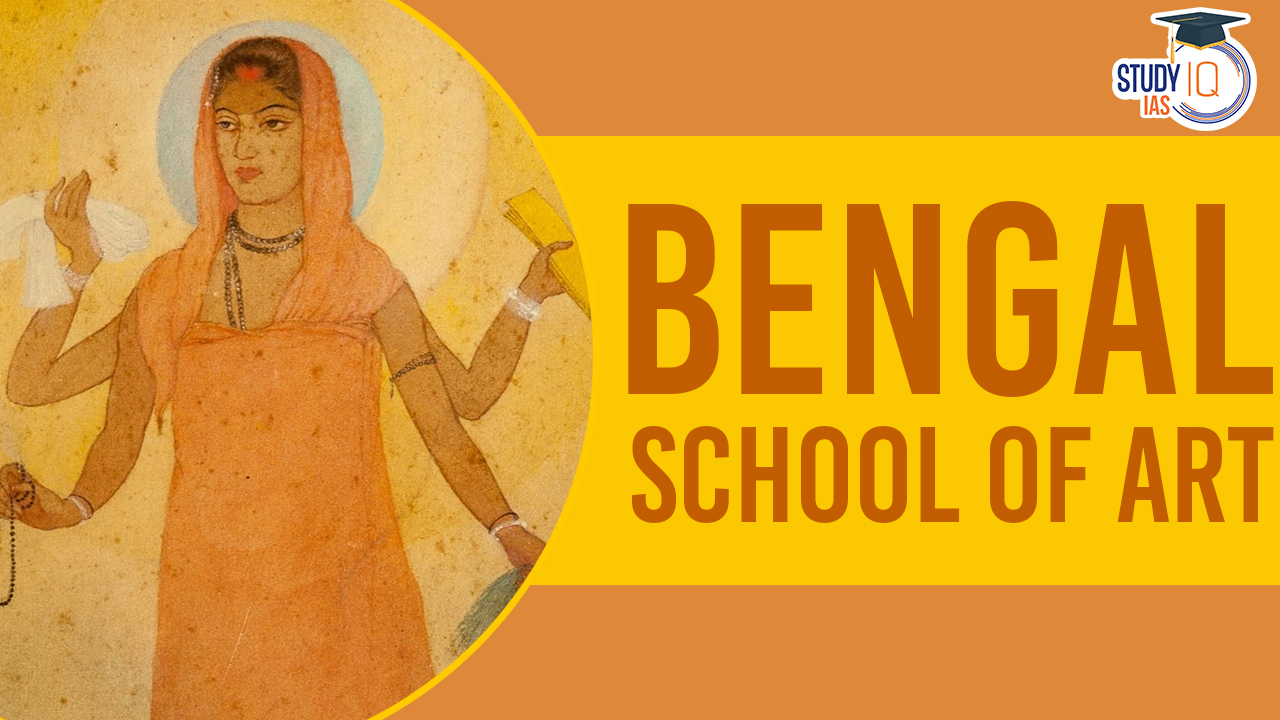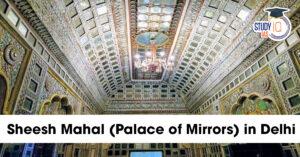Table of Contents
The Bengal School of Art, also known as the “Calcutta School of Art,” was a prominent art movement that emerged in the early 20th century in Bengal, India. The school played a crucial role in the Renaissance of Indian art and was instrumental in breaking away from the rigid academic traditions of the time. The Bengal School sought to revive and promote indigenous Indian art forms and techniques, incorporating them into a modern context.
We’re now on WhatsApp. Click to Join
Evolution of Bengal School of Art
The Bengal School of Art evolved in early 20th-century India as a response to Western academic dominance. Spearheaded by Rabindranath Tagore and Abanindranath Tagore, the movement rejected Western naturalism and embraced traditional Indian art forms. Influenced by the nationalist spirit, it sought a distinct cultural identity. Abanindranath Tagore’s emphasis on spirituality and mythology, along with the revival of traditional techniques, defined the Bengal School’s unique aesthetic. Its legacy lies in shaping modern Indian art, inspiring subsequent movements, and fostering a renewed pride in indigenous artistic traditions.
Features of Bengal School of Art
- Rejection of Western Naturalism: Bengal School artists, led by Abanindranath Tagore, vehemently rejected Western naturalistic styles prevalent during British colonial rule.
- Emphasis on Traditional Techniques: The school revived traditional Indian art techniques, including tempera painting and frescoes, which were integral to its artistic expression.
- Incorporation of Indian Themes: Bengal School artworks prominently featured Indian themes, mythology, folklore, and spirituality, reflecting a conscious effort to assert cultural identity.
- Nationalist Vision: Rooted in the nationalist sentiment of the time, the Bengal School sought to create an art form that was distinctly Indian and reflective of the country’s rich cultural heritage.
- Inspiration from Ajanta Frescoes: Abanindranath Tagore drew inspiration from the ancient frescoes of Ajanta, incorporating elements of classical Indian art into the Bengal School’s aesthetic.
- Unique Fusion of Tradition and Modernity: The Bengal School achieved a harmonious fusion of traditional Indian artistic traditions with modern artistic expressions, creating a distinctive visual language.
- Leading Figures: Abanindranath Tagore, Nandalal Bose, and other prominent artists played crucial roles in defining and shaping the Bengal School’s features.
- Cultural Renaissance: The Bengal School was integral to the broader cultural renaissance in India, contributing to a renewed sense of pride in indigenous art forms and traditions.
- Impact on Modern Indian Art: The Bengal School’s emphasis on cultural pride, rejection of Western norms, and revival of traditional techniques left a lasting impact on the trajectory of modern Indian art.
Founders of Bengal School of Art
- Abanindranath Tagore (1871-1951): Often regarded as the founder of the Bengal School, Abanindranath Tagore was a nephew of the renowned poet Rabindranath Tagore. He played a pivotal role in shaping the artistic philosophy of the school.
- B. Havell (1861-1934): An influential British art educator, Havell was the Principal of the Government College of Art and Craft in Calcutta. He collaborated with Abanindranath Tagore and other artists to develop a distinct artistic style.
Artistic Philosophy of Bengal School of Art
- Swadeshi Movement Influence: The Bengal School emerged during the Swadeshi Movement, a nationalist movement in India against British rule. Artists associated with the school believed in promoting indigenous Indian art as a form of cultural resistance.
- Revival of Traditional Techniques: The artists of the Bengal School drew inspiration from traditional Indian art forms such as Mughal and Rajput miniature paintings. They sought to revive and adapt these techniques to create a unique Indian aesthetic.
- Spiritual and Nationalistic Themes: The artworks often depicted mythological and spiritual themes, reflecting a sense of nationalism and cultural identity. Symbolism and allegory were commonly used to convey deeper meanings.
Characteristics of Bengal School Art
- Use of Tempera Technique: Artists of the Bengal School preferred the use of tempera, a traditional painting technique that involved mixing pigments with a water-soluble binder medium. This technique was chosen for its connection to ancient Indian mural traditions.
- Flatness and Two-Dimensionality: The paintings often displayed a flat, decorative style with an emphasis on two-dimensionality, reminiscent of traditional Indian art.
- Harmony of Color: The color palette was often vibrant and harmonious, reflecting the influence of traditional Indian color schemes.
Legacy of Bengal School of Art
- Influence on Modern Indian Art: The Bengal School laid the foundation for modern Indian art and inspired subsequent generations of artists. Many prominent Indian artists, including Nandalal Bose, Jamini Roy, and Gaganendranath Tagore, were associated with or influenced by the Bengal School.
- Impact on Art Education: The Bengal School had a significant impact on art education in India. Nandalal Bose, a key figure in the school, played a crucial role in shaping art education policies.
Bengal School of Art UPSC
The Bengal School of Art was an art movement and style of Indian painting that emerged in the early 20th century. It originated in Bengal, primarily in Kolkata and Shantiniketan, and spread throughout the Indian subcontinent. The school promoted Indian modernism and celebrated indigenous cultural heritage. The Bengal School of Art was led by artists and reformers like E.B. Havell and Abanindranath Tagore. It challenged academic art styles of Indian artists like Raja Ravi Verma. The school was a voice against Western influence.


 UNESCO World Heritage Sites of India Lis...
UNESCO World Heritage Sites of India Lis...
 Chakma and Hajong Communities: History, ...
Chakma and Hajong Communities: History, ...
 Sheesh Mahal in Delhi Restoration, Archi...
Sheesh Mahal in Delhi Restoration, Archi...





















